Refer here
Refer here1
Refer here2
Top Searching algorithm in google
Top Searching algorithm in google
Popular Google Search Algorithms with Artificial Intelligence and Machine Learning
Google Panda Algorithm
Google Panda is one of the popular search algorithm updates that was released on 11th February 2011, with the aim of addressing the issue of spam. Before Panda was released, many companies were able to rank higher on the search results that produced low-quality content. These companies were called ‘Content Farms’. Their aim was to churn-out a large number of low-quality content every day and market them on Social Platforms and to earn a lot through ad campaigns.
Panda was an algorithm update that resolved this issue by giving a quality classification to every site. It was an AI-enabled algorithm that separated thin content from the quality content, which allowed sites with high quality and insightful content to rank higher providing better and more helpful search results.
The Panda algorithm update assigns a so-called “quality score” to web pages. This score is then used as a ranking factor. Initially, the effects of Panda were mild, but in January 2016 it was permanently incorporated into Google’s core algorithm. Since then, update rollouts have become more frequent, so both Panda penalties and recoveries now happen faster.
How to adjust: Run regular site checks for content duplication, thin content, and keyword stuffing. To do that, you’ll need a site crawler, like SEO PowerSuite’s Website Auditor.
With the WebSite Auditor’s new Content Editor module, you can also avoid a potential penalty and create pages without the risk of accidental keyword stuffing. Content Editor analyzes the pages of your top competitors and provides SEO recommendations based on the content that’s already successful in Google search.
Google Penguin Algorithm
Google did not only struggled with thin content but also dealt with black hat link building techniques. A strategy, where a lot of low-quality links used to be added in the content to gain a higher rank in Google Search.
Penguin was rolled out with the aim to give higher rank to web pages that have good quality content and good quality incoming link. Penguin came out in several tweaks and refreshes, which helped almost 3% of the search results. Since 2016, Penguin is a part of Google’s core search algorithm and works in real-time.
Popular Machine learning technique, Pattern Detection plays a huge role in running the Penguin Algorithm as it allows the algorithm to separate content on the basis of low-quality attributes. This, in turn, allows those content to rank higher which actually deserves.
To stay safe from the effects of the Google Penguin update, monitor your link profile’s growth and run regular audits with a backlink checker like SEO SpyGlass. In the tool’s Summary dashboard, you’ll find a progress graph for your link profile’s growth. Look out for any unusual spikes: those might be the result of a negative SEO attack by your competitors
The stats that we know Penguin takes into account are incorporated into SEO SpyGlass’s Penalty Risk formula. Navigate to the Penalty Risk tab and sort your backlink list from highest risk to lowest. Links with a risk above 50% should be investigated. If they turn out to be malicious, add them to the disavow file, download it, and submit it to Google’s Disavow Links Tool.
Hummingbird Algorithm
While Panda and Penguin were minor updates in Google Search Algorithm, Hummingbird took the Google Search to a whole new level by introducing Artificial Intelligence technologies deep into it. Hummingbird came out with a capability of Semantic search and Natural Language Processing that allowed Google to understand the intent of the search query. For instance, if you type, “Michael Shoemaker”, Google fetches the following result:
The Hummingbird algorithm helps Google better interpret search queries and provide results that match searcher intent (as opposed to the individual terms within the query). While keywords continue to be important, the Hummingbird algorithm makes it possible for a page to rank for a query even if it doesn’t contain the exact words the searcher entered. This is achieved with the help of natural language processing that relies on latent semantic indexing, co-occurring terms and synonyms.
How to adjust: Expand your keyword research and focus on concepts behind the keywords. Carefully analyze related searches, synonyms and co-occurring terms. Great sources of such ideas are Google Related Searches and Google Related Questions, as well as Google Autocomplete suggestions. You’ll find all of them incorporated into Rank Tracker’s Keyword Research module.
‘Shoemaker’ is obviously the wrong spelling. However, Hummingbird realizes the intent and fetches the result that was expected. This clearly means that Semantic search enables the Google Search to parse the intent rather than the exact keyword. Semantic Search tries to match the SERPs with the language of searchers. The motive behind coming up with Hummingbird was to improve the voice search or conversational search.
RankBrain Algorithm
RankBrain Algorithm is another popular update that forms a part of Google’s Hummingbird algorithm. RankBrain is an Artificial Intelligence infused algorithm that fetches the best result for a query that is unknown to Google. Suppose you type “Orange” in Google Search. Now the keyword “Orange” may imply the fruit, or the French Telecommunication firm named “Orange”. In this case, you would get the result with mixed outputs.
RankBrain Algorithm is built on the Back Propagation Technique that is a standard method of training artificial neural networks. It fine-tunes the weights of a neural network on the basis of the rate of error obtained from the previous iteration. In the case of the RankBrain Algorithm, when an unknown query is searched, then the algorithm fetches the best fit results for the user. After which it compares the user’s rate of satisfaction and adds the phrase or keyword to the database if the rate of satisfaction is high.
RankBrain is a part of Google’s Hummingbird algorithm. It is a machine learning system that helps Google understand the meaning behind queries and serve best-matching search results in response to those queries. Google calls RankBrain the third most important ranking factor.
While we don’t know the exact formula behind this major update, the consensus is that RankBrain is responsible for customizing a user’s Google search results. Basically, Google goes beyond a person’s search query and takes into account the larger context, like synonyms, implied words, and personal search history.
How to adjust: Optimize your pages for relevance and comprehensiveness with the help of competitive analysis. With the WebSite Auditor‘s TF-IDF tool, you can discover entire lists of relevant terms and concepts used by a large number of your top-ranking competitors. Find a way to add these terms to your content and you will see your search relevance increase dramatically.
Google BERT Algorithm
Tagged as the biggest Google search algorithm update in a decade, BERT is an open-source neural-network-based technique for Natural Language Processing pre-training. BERT is the acronym for Bidirectional Encoder Representations from Transformers. It is a deep learning search algorithm that performs tasks like tagging the parts of speech, recognizing entities, answering the questions, etc., and thereby helping Google understand the Natural Language.
BERT handles tasks such as entity recognition, part of speech tagging, and question-answering among other natural language processes. It helps Google understand natural language text from the Web and improve the language understanding for queries in natural language or conversational queries.
BERT processes each word of a query in relation to all the words in the sentence, instead of taking them one-by-one. It analyzes each word keeping the words before and after into consideration, i.e., it takes into account the full context of a sentence. This is the reason that this algorithm is called Bidirectional. The best part of BERT is that it learns something from one language and applies it to other algorithms
his Google algorithm update uses natural language processing technology to better understand search queries, interpret text, identify entities and relationships between entities. We’ve seen Panda, Hummingbird and RankBrain updates move away from keywords, and the BERT update is the culmination of this effort — it allows Google to understand much more nuance in both queries and search results.
How to adjust: We’ve finally lived to see the day when Google is actually rewarding good writing. Like never before, it is important to strive for meaningful copy. It means you should go easy on fluff words and adopt an expository style of writing. It is also a good idea to do entity research when creating copy — including relevant entities helps create context for your content.
Artificial Intelligence and Machine Learning Techniques in Google Search Algorithm
Google has adopted Artificial Intelligence and Machine Learning algorithms like no other. Whether it is Gmail, Google map, Google Ads, YouTube or Google Play, AI and ML have occupied considerable space in all of its services. These two technologies have turbo-charged the way Google Search Algorithms used to work before. Let us find out the various ways in which AI and ML help Google Search Algorithms!
New Signals Identification: Google’s intelligent algorithms like RankBrain do not only help best-fit results but also identifies new signals that can be used to improve the search results. In the future, many more Google’s search signals will be machine-learning based.
Pattern Detection: Google predominantly uses pattern detection to identify spam and flag them. It identifies the thin content on the basis of attributes like too many keywords, the use of unrelated outbound links, too many advertisements, etc. These attributes actually help Google search to fetch more relevant results and improve user satisfaction.
Image Search: With more and more emphasis on visual stimulation, the use of images, GIFs, videos, Infographics have increased exponentially. Hence, the need for cataloging and analyzing the images has become critical from the perspective of search. Machine learning and AI play a crucial role in mapping the pattern of an image with another. This, in turn, helps people search for something through images instead of through texts. This also helps webmasters in shaping their SERPs.
Target Advertising: Google Search has allowed firms to target ads specific to some audience, linked to certain keywords. Which ads will be shown at which rank is very much decided by machine learning, that fetches targeted ads based on each keyword, its click-through-rate, landing page experience, and many more factors.
Synonyms Identification: Google also tries to find the synonyms for a particular keyword. Based on the synonyms, Google also reflects the related searches at the bottom of the search page. You may have noticed that when you search a particular query, Google fetches a snippet. This happens when Google knows the synonyms of a particular word.
Important AI and ML algorithm
Google Panda Algorithm
Pattern Detection
Semantic search and Natural Language Processing
Back Propagation Technique
New Signals Identification
Pattern Detection
Image Search
Target Advertising
Synonyms Identification
Matt Cutts
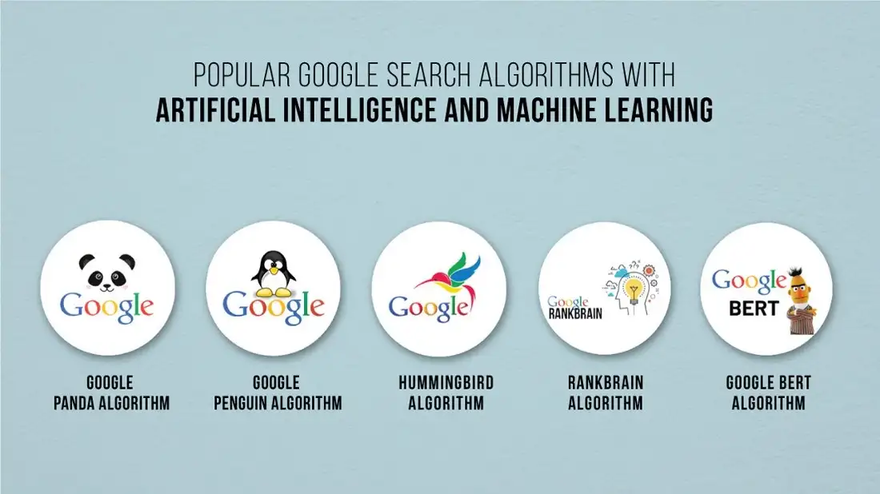
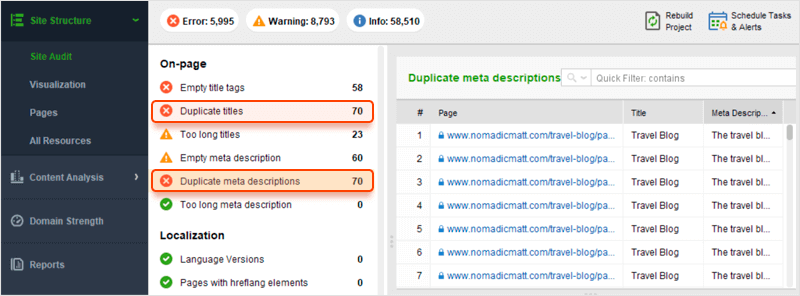
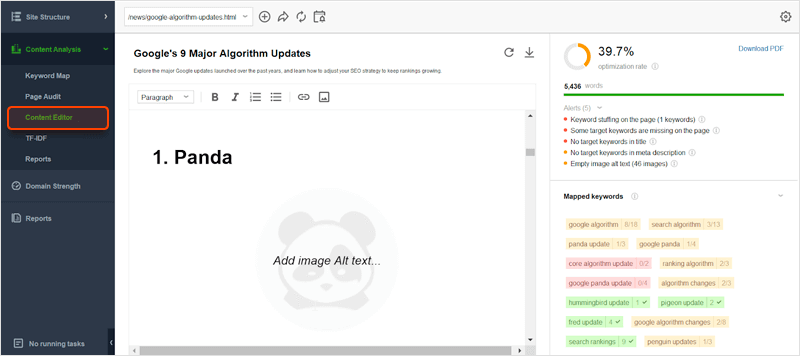
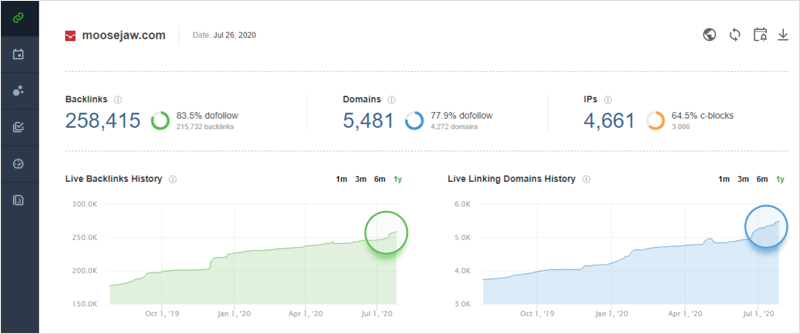
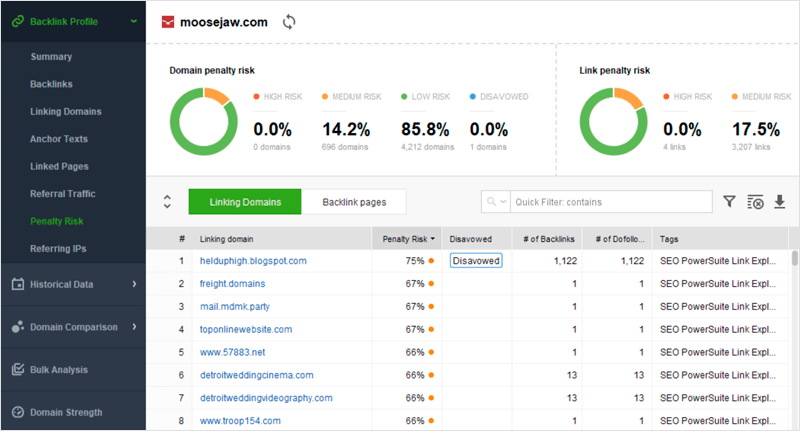
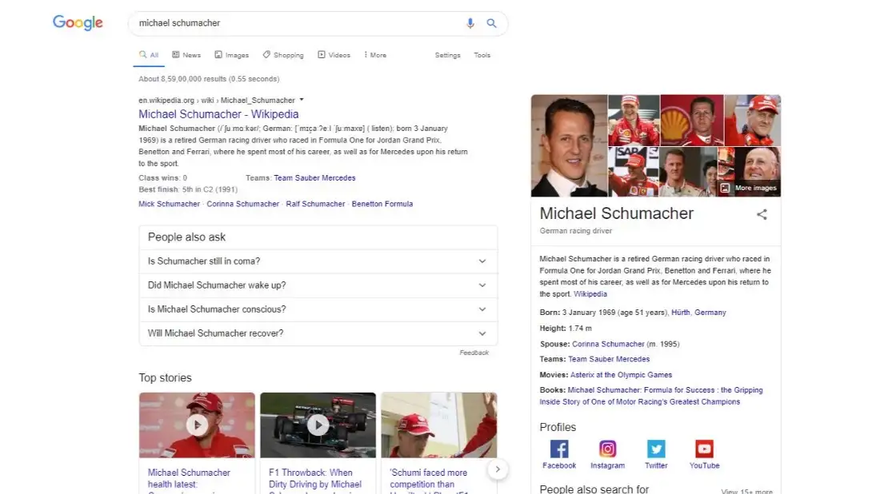
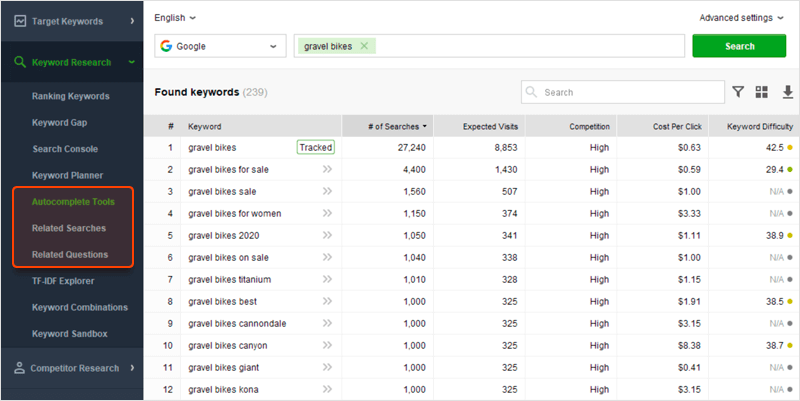
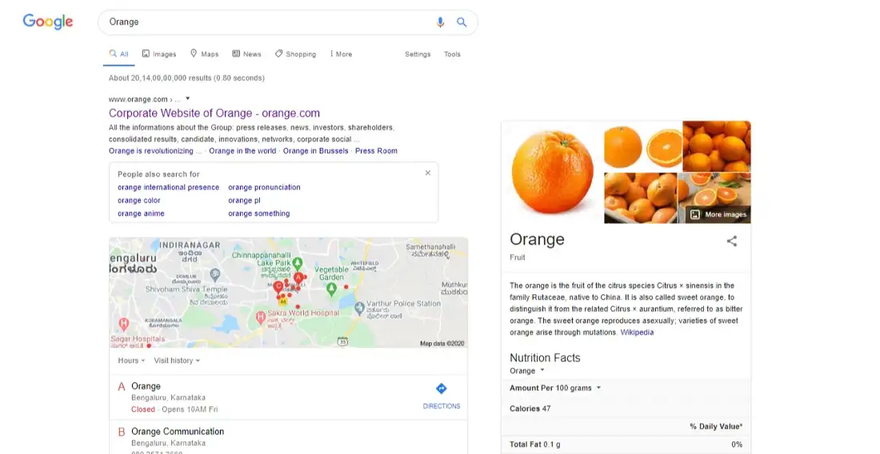
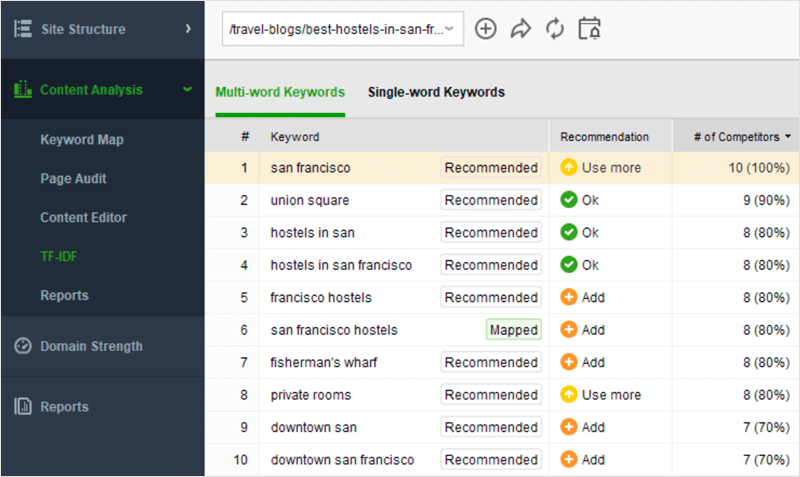
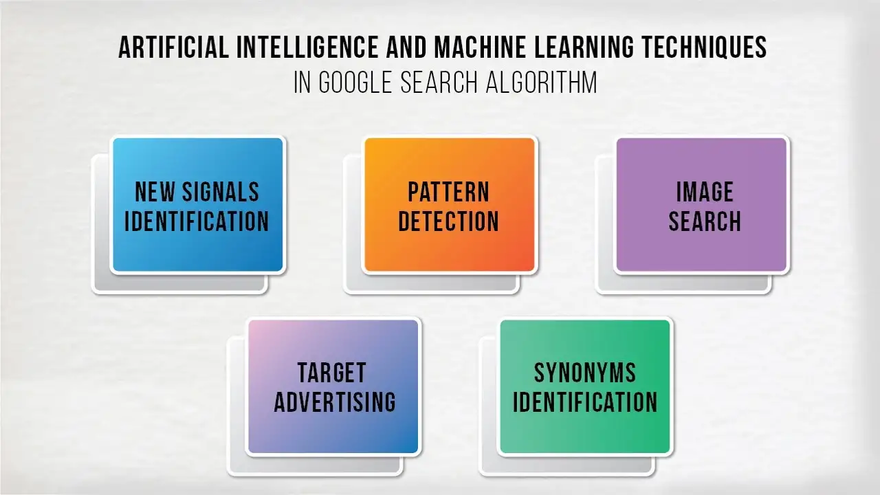

Top comments (0)